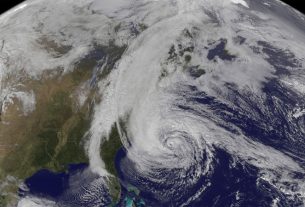A recent French study highlights the significant pollution emanating from astronomy research. This work is emerging at a time when all sectors of activity must reduce their CO2 emissions as much as possible.
Astronomy emits a lot of CO2
Today, the fight against greenhouse gas emissions is a global priority. In November 2021, the Global Carbon Project also confirmed the return of global CO2 emissions to the level they were at before the health crisis linked to Covid-19. For Jürgen Knödlseder, research director at the CNRS, each reduction in these emissions is therefore a good thing.
With his team from the Institute for Research in Astrophysics and Planetology (INRAP) at the University of Toulouse, he assessed the emissions from his own field of research. Details of the study appear in a publication in the journal Nature Astronomy on March 21, 2022. According to the results, astronomy emits a significant amount of CO2. However, if the margin of error is significant, it seems that this trend is on the rise.
A method subject to criticism
First, the researchers tried to assess IRAP’s emissions, but they quickly identified a problem. Indeed, to accurately measure these emissions, they also had to take into account those emanating from devices located in the four corners of the world, but also data from various observatories and other missions. Thus, the scientists finally broadened their analysis by selecting no less than forty observatories and telescopes around the world and around fifty major space missions.
On the other hand, the integration of these telescopes, observatories and missions has been complicated by a glaring lack of transparency regarding their CO2 emissions. Thus, the researchers resorted to the so-called monetary ratio method, which has been criticized for the high level of uncertainty it entails. However, this method was the only one available to establish a direct link between carbon emissions and the cost of a project.
What do the numbers say?
According to the study, all the missions and observatories have generated 20.3 million tonnes of CO2 since their inception. So that comes to about 1.2 tons per year, which is as much as a small country like Croatia. In addition, each astronomer would be responsible for the emission of 36 tons of CO2 per year, the equivalent of the emissions from a car that would drive 150,000 km. By way of comparison, each French person emits around ten tonnes of CO2 each year on average.
For researchers, the desire to reduce CO2 emissions from the astronomy sector has its limits. Indeed, the projects are always more imposing, and therefore more polluting. However, space missions tend to multiply and currently, several telescopes are under construction, including the Extremely Large Telescope of the European Space Observation Agency (ESO).

Email: mary@satprwire.com Phone: +44 20 4732 1986
Marry is a fitness freak in every manner and gives proper care about her health and of others. She is probably the best person we have at Daily Research News for covering articles from the Health sector. If not at work, she can be seen drinking a cup of coffee.



